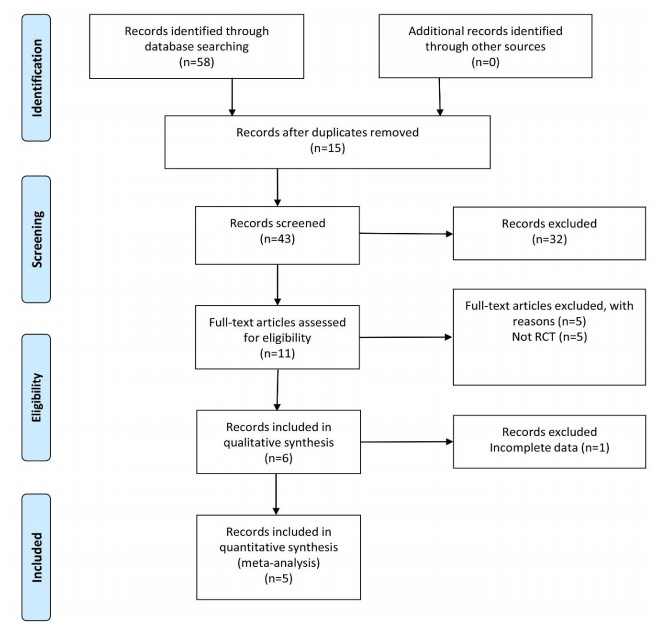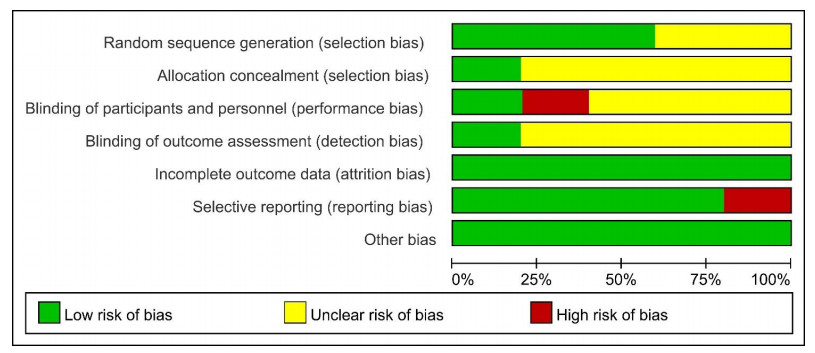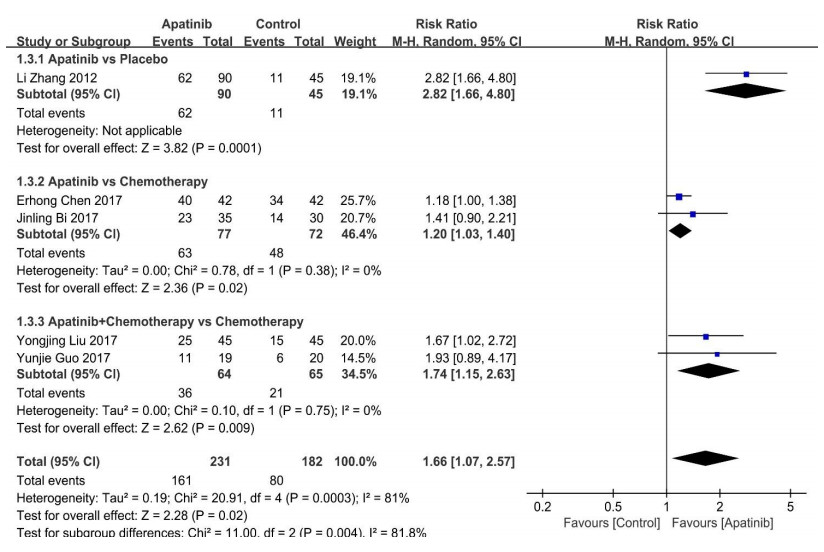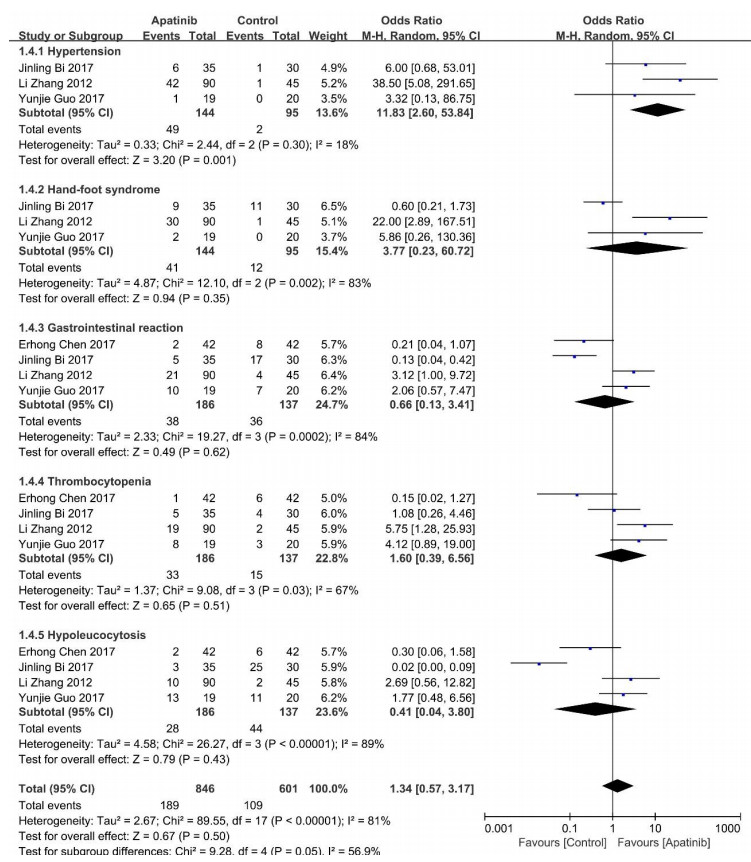1.
Introduction
Lung cancer is the leading cause of cancer-related death in men and the second leading cause (after breast cancer) in women worldwide; more than 1 million deaths are attributed to this disease annually [1,2,3]. Non-small-cell-lung cancer (NSCLC) accounts for approximately 80–85% of all lung malignancies, and presents as locally advanced NSCLC in approximately 25–30% of cases and as metastatic disease in approximately 40–50% of cases [4]. The preferred treatment for lung cancer is surgical resection; however, many patients with advanced NSCLC still experience relapse despite complete excision; the 5-year survival for patients who only undergo surgical treatment is less than 25% [5].
Platinum-based chemotherapy is the mainstay of treatment for patients who are ineligible for surgical treatment. Although patients may benefit from chemotherapy in the short term, their response rates are ultimately disappointing as most eventually experience recurrence. The screening, diagnosis, and treatment of NSCLC have made considerable progress over the past decade. Of note is the discovery of targetable molecular markers such as epidermal growth factor receptor (EGFR). EGFR tyrosine kinase inhibitors are the first-line treatments for patients with advanced NSCLC whose tumors are positive for EGFR mutations; these inhibitors increase treatment efficacy, decrease toxic effects, and improve outcomes [6,7,8]. However, EGFR mutations are found only in 10–30% of patients with NSCLC [9], and the initial treatment for patients with advanced NSCLC without genetic mutations remains platinum-based doublet chemotherapy [10]. Patients in whom second or later-line treatments fail have no effective treatment options available, although many are administered chemotherapy in practice [11].
Angiogenesis is essential for tumor growth and metastasis [12]. Vascular endothelial growth factor (VEGF), which activates the VEGF receptor (VEGFR), has long been known to have a critical role in promoting tumor angiogenesis [13]. Hence, VEGF and VEGFR are important targets in cancer therapy, and VEGF inhibition has been proven to be effective against many solid tumors [14,15,16]. The anti-VEGF antibody bevacizumab has been shown to significantly improve PFS and overall survival (OS) in patients with advanced NSCLC in several studies [17,18].
Apatinib, a novel orally bioavailable small molecule inhibitor of VEGFR-2, could inhibit VEGF-stimulated endothelial cell migration and proliferation and decrease tumor microvascular density, thus inhibiting the growth of tumors. This might lead to prolonging the survival time of patients. It has been shown to be efficient and safe for the treatment of multiple tumor types, such as breast and gastric cancers [14,16,19]. Apatinib also be used in patients with advanced NSCLC for second or later-line treatments [20]. When chemotherapy and/or targeted therapy fail, it might become a new option. However, the efficacy and safety of Apatinib in this case was not clear. The meta-analysis described herein was performed to assess the efficacy and toxicity of Apatinib in patients with advanced NSCLC.
2.
Materials and method
2.1. Data sources and search strategy
In November 2017, we searched the PubMed, EMBASE, Cochrane Library, China National Knowledge Internet (CNKI), and Wanfang database for randomized controlled trials using the keywords ("NSCLC" OR "Carcinoma, Non-Small Cell Lung") AND ("Apatinib" OR "YN968D1") without language or year restrictions. The reference lists of recovered articles were also searched for related original and review articles to screen for additional trials.
2.2. Study selection
Two investigators independently assessed candidate articles for inclusion. Any disagreements between the 2 assessments were resolved by discussion with a third investigator. The relevant studies were manually and carefully selected based on the following criteria:
(1) randomized controlled trial, (2) patients had pathologically confirmed NSCLC, (3) studies compared the efficacy and toxicity of apatinib with a placebo or chemotherapy, we defined the treatment group without apatinib as the control group, and (4) studies contained sufficient data for extraction. The Cochrane collaboration's tool was used to evaluate the risk of bias in the studies [21].
2.3. Data extraction
The same 2 investigators independently extracted the necessary information from each of the included articles, then cross-checked the information. Discrepancies were settled by discussion with a third investigator.
The following information were collected from each study unless otherwise not available: First author, year of publication, number of patients, patient characteristics (such as sex), and outcomes (including median PFS, ORR, and DCR values; HRs for PFS and their 95% CIs; and adverse events such as hand-foot syndrome and hypertension).
2.4. Statistical analysis
RevMan 5.3 software (Copenhagen: The Nordic Cochrane Centre, The Cochrane Collaboration, 2014) was used to perform statistical analysis. The Engauge Digitizer 4.1 software was used to extract survival data from the Kaplan-Meier curves [22,23]. The pooled HRs for PFS, RRs for ORRs and DCRs, and ORs for different adverse events were calculated. The statistical heterogeneity between trials was evaluated by the Q-statistic [24]. A Q Statistic P-value < 0.1 or an I2 > 50% indicated significant statistical heterogeneity between studies, in which case a random-effects model was used to analyze the data. Otherwise, a fixed-effects model was used. Subetaoup analysis was used to reduce heterogeneity. A statistical test with a P-value < 0.05 was considered significant. An HR > 1 indicated a greater death or progression rate upon treatment with apatinib, an RR > 1 indicated a greater overall response, and an OR > 1 indicated greater toxicities due to therapy. All P-values were 2-sided, and all CIs had 2-sided probability coverages of 95%.
3.
Results
3.1. Study identification and eligibility
Fifty-eight candidate articles were identified by systematically searching the relevant databases using our search strategy, of which 5 qualified articles describing studies that compared the efficacy and toxicity of apatinib to controls in patients with advanced NSCLC were included based on our criteria (Figure 1) [20,25,26,27,28]. A study was excluded because the data was incomplete and ambiguous [29]. All the articles were written in Chinese, and all studies were conducted in China. The characteristics of these studies are shown in Table 1. The 5 clinical studies comprised 413 patients; the number of patients per study ranged from 39 to 135. Results of the analyses of risk of bias in the studies are shown in Figure 2.
3.2. Progression-free survival
Only 2 of the studies investigated PFS rates, with no significant heterogeneity between them (P = 0.34, I2 = 0%). We used the fixed-effects model to estimate the pooled hazard ratio (HR) for PFS, which showed that therapy with apatinib significantly improved PFS in patients with advanced NSCLC (HR: 0.32, 95% confidence interval (CI): 0.21–0.48, P < 0.00001, Figure 3). Apatinib was used as a third- or later-line treatment in Li Zhang's study [20], so placebo was used as a control group. While in the study of Yunjie Guo [27], apatinib was used as a second-line treatment, it was not appropriate to use a placebo as the control group. However, no matter what treatment was used as the control group, apatinib benefited patients from PFS
3.3. Objective response rate
All 5 studies investigated the ORR; there was no significant difference between them (P = 0.53, I2 = 0%). The total pooled RR for ORR, which was calculated using the fixed-effects model, was 2.03 (95% CI: 1.36–3.01, P = 0.0005), and was significantly higher in the apatinib group than the control group (Figure 4), indicating that apatinib improved the ORR. Subetaoup analysis revealed that the ORRs of the apatinib and chemotherapy groups were not significantly different (P = 0.09). However, the ORRs were significantly higher in the apatinib plus chemotherapy group than in the chemotherapy-only group (P = 0.02). When using placebo as the control group, ORR was lower than other studies using chemotherapy as the control group. The treatment group containing apatinib effectively improved ORR.
3.4. Disease control rate
All 5 studies investigated the DCR; the differences between the studies were significant (P = 0.0003, I2 = 81%).The total pooled RR for the DCR (calculated using the random-effects model) was 1.66 (95% CI: 1.07–2.57, P = 0.02), and was significantly higher in apatinib-treated patients than in the control group (Figure 5). Subetaoup analysis was used to reduce heterogeneity. The differences between the studies' apatinib vs. chemotherapy-alone and apatinib plus chemotherapy vs. chemotherapy-alone groups were not significant (P = 0.38, I2 = 0%; and P = 0.75, I2 = 0%; respectively). The corresponding pooled RRs for DCR were 1.20 (95% CI: 1.03–1.40, P = 0.02) and 1.74 (95% CI: 1.15–2.63, P = 0.009), respectively, demonstrating that apatinib therapy significantly improved the DCR. DCR was lower in the placebo control group than that in chemotherapy control group. The treatment group with apatinib effectively improved DCR.
3.5. Toxicity
Gastrointestinal reaction, hand-foot syndrome, hypertension, thrombocytopenia, and hypoleucocytosis were the most common adverse events. The pooled OR was 1.34 (95% CI: 0.57–3.17) (Figure 6), indicating less toxicity in the control group than in the apatinib group; however, the difference was not statistically significant (P = 0.5). There was high heterogeneity (I2 = 81%) between the apatinib and control groups; therefore, a random-effects model was employed. For gastrointestinal reaction and hypoleucocytosis, the pooled OR were 0.66 (95% CI: 0.13–3.41) and 0.41 (95% CI: 0.04–3.80), respectively, indicating more gastrointestinal reaction and hypoleucocytosis in the control group than in the apatinib group; however, the difference was not statistically significant (P = 0.62 and P = 0.43). The heterogeneity (I2 = 84% and I2 = 89%) between the apatinib and control groups was significant. For hypertension, hand-foot syndrome, thrombocytopenia, the pooled OR were 11.83 (95% CI: 2.60–53.84), 3.77 (95% CI: 0.23–60.72) and 1.60 (95% CI: 0.39–6.56), respectively, indicating less hypertension, hand-foot syndrome, thrombocytopenia in the control group than in the apatinib group; The difference was not statistically significant (P = 0.51 and P = 0.35) for hand-foot syndrome and thrombocytopenia and the difference was statistically significant (P = 0.001) for hypertension. There was high heterogeneity (I2 = 83% and I2 = 67%) between the apatinib and control groups for hand-foot syndrome and thrombocytopenia. The heterogeneity (I2 = 18%) between the apatinib and control groups for hypertension was not significant. Subetaoup analysis showed that the differences between the studies in each category were statistically significant except for hypertension (I2 = 18%). The incidences of hypertension, hand-foot syndrome, and thrombocytopenia in the apatinib group were higher than those in the control group, although only in the hypertension group was the difference significant (OR: 11.83, 95% CI: 2.60–53.84, P = 0.001). The incidences of gastrointestinal reactions and hypoleucocytosis in the apatinib group were fewer than in the control group, although the differences were not statistically significant.
4.
Discussion
To our knowledge, ours is the first meta-analysis to assess the clinical benefit of apatinib as a post-first-line treatment in patients with advanced NSCLC. Our results demonstrated that apatinib therapy for advanced NSCLC as a second-or-subsequent-line treatment provides a substantial clinical benefit. Apatinib may therefore be a novel choice for patients with advanced NSCLC who fail second- or higher-line treatments, given that no standard treatment regimens are yet recommended for such patients.
Apatinib is a first-generation oral small molecule VEGFR inhibitor that has been independently researched and developed in China; its main target is VEGFR-2 [30]. Several studies have confirmed that blocking VEGFR-2 effectively inhibits angiogenesis [31,32], and apatinib has been approved by the China Food and Drug Administration for treating advanced or metastatic chemorefractory gastric cancer [14]. Several studies had been reported for the application of apatinib in patients with advanced NSCLC [33,34,35]. To date, the vast majority of studies involving apatinib for advanced NSCLC were conducted in China; therefore, all the papers evaluated in this meta-analysis were authored in China. Because we systematically assessed the efficacy and adverse reactions of apatinib in patients with advanced NSCLC in related randomized trials, the results of our study may be applicable to patients in other countries.
This meta-analysis covered all the currently published randomized studies in which apatinib was used as a post-first-line treatment for advanced NSCLC. The results confirmed that treatment with apatinib provided substantial clinical benefits for patients in term of PFS, ORR, and DCR. The ORR of the apatinib group was higher than that of the chemotherapy group, although the difference was not statistically significant. However, the difference in the ORRs of the apatinib plus chemotherapy vs. chemotherapy-only groups was significant. In terms of DCR, the differences between the studies in each subetaoup were not statistically significant (I2 = 0%), and all showed that apatinib provides a substantial benefit to patients with advanced NSCLC.
Overall survival is usually the endpoint for evaluating clinical benefit, whereas PFS is considered a surrogate endpoint. However, not all investigations included in our meta-analysis reported overall survival rates, assessment of which was therefore absent. The significant improvements in PFS, ORR, and DCR ought to be meaningful to the patients; therefore, a fair recommendation that apatinib be used to treat patients with advanced NSCLC is reasonable.
In general, the adverse events were similar among patients in the apatinib and control groups (P = 0.50), although there was high heterogeneity between the studies. The differences between the hypertension subetaoups in the studies were not statistically significant, even though the incidence of hypertension in the apatinib group was significantly higher than that in the control group. Hence, the results of other subetaoup analyses should be considered with caution.
There were several limitations in this study. First, the different methods of treatment contributed to increased clinical heterogeneity. Second, our meta-analysis was based on data extracted from published literature, not on individual patient data. Third, the quantity and quality of research included in this meta-analysis were limited; more high-quality randomized controlled trials are warranted to investigate the efficacy of apatinib against advanced NSCLC.
5.
Conclusion
Apatinib is an effective choice for patients with advanced NSCLC, and produces a clinically meaningful and statistically significant improvement in PFS, ORR, and DCR. Adverse reactions associated with apatinib were acceptable. Therapy with apatinib-based regimens is suggested for second- or later-line treatment of advanced NSCLC.
Acknowledgements
We express sincere gratitude to all the authors involved in this study.
Conflict of interest
The authors declare that they have no conflict of interest.










 DownLoad:
DownLoad:











